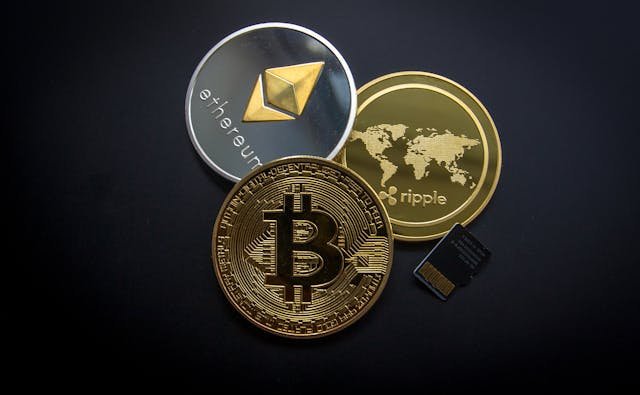Exploring the Origins of Funds: Understanding the Economics of Steem
In the realm of Steem discourse, frequent misunderstandings about its economic framework abound. This exposition endeavors to elucidate Steem's economic mechanics as I perceive them, with the hope of dispelling some of the confusion. Note: This narrative reflects solely my perspective and does not constitute financial counsel.
Steem can be envisaged as a decentralized blockchain-based enterprise, yet a more fitting analogy might liken it to a government. It incurs expenditures and garners revenue. Expenditures encompass compensating block producers for maintaining the Steem blockchain’s infrastructure, liquidity rewards (temporarily suspended with the 0.12.0 hardfork until an improved system is established), and notably, the substantial cost of remunerating content creators. Revenue, akin to a government, is derived from taxes on its members. Specifically, Steem imposes two forms of wealth taxes disguised as inflation. It levies approximately a 50% annual tax on liquid STEEM and a variable tax of less than 5% annually on Steem Power (excluding the STEEM supply fluctuations due to Steem Dollar conversions at disparate issuance prices; these rates reflect long-term figures post the inaugural year, as STEEM’s supply inflation exceeds 100% APR in its first year).
Adopting a business analogy instead of a governmental one, perceiving taxes as revenue becomes nonsensical. Nonetheless, one could correlate the Steem Power tax to a subscription fee the platform charges, discriminating based on the user's stake within the system (though a larger stake does afford benefits like greater vote weight, enhanced curation rewards, and a larger bandwidth quota, so it's not entirely fair to call it price discrimination).
To sustain the dollar value of their Steem Power (assuming STEEM’s market cap remains stable in dollar terms), users must earn or purchase additional STEEM over time. Some may acquire the needed STEEM to offset the deficit through upvotes on their content or curation rewards. Others may need to purchase STEEM from external exchanges using external currency (often via bitcoin, but potentially directly with US dollars in the future). Additionally, they might earn Steem Dollars through trade, converting these to Steem Power via Steem’s internal exchange.
If the market cap escalates by at least 5% annually, users need not earn or buy more STEEM to preserve the dollar value of their Steem Power holdings. If the market cap grows substantially more than 5% annually, as seems plausible given STEEM’s recent performance, users could realize a significant return on their Steem Power without needing additional earnings from curation or content. Regardless of market cap fluctuations, users will experience a reduction in their fractional ownership of Steem Power unless they offset this decline by earning or purchasing more. A reduced fractional ownership diminishes their voting influence and curation rewards relative to others and decreases their bandwidth priority. However, a rising market cap mitigates this impact by expanding the available bandwidth faster than the user's share decreases.
Failing to earn or buy sufficient Steem Power will gradually reduce a user's Steem Power fraction, eventually restricting their platform usage to merely consuming content. To remain active on the platform, users must maintain a minimal fraction of Steem Power. Basic platform usage requires only a modest Steem Power amount in dollar terms, but users must continuously counteract the annual less-than-5% effective tax on their Steem Power to retain usability, effectively amounting to a subscription fee. This mechanism enables the platform’s potential indefinite operation post-market saturation, contingent on users’ willingness to pay this effective subscription fee.
Several factors might compel users to pay this "subscription fee" on Steem’s social media platform, unlike other social networks. First, Steem avoids nickel-and-diming users, sparing them from the cognitive burden of micro-transaction fees for every interaction. A monthly subscription fee, albeit higher, is psychologically more acceptable. Second, the inflation tax, a hidden wealth tax, is less off-putting because users dislike seeing their screen numbers dwindle. Most importantly, the content/curation reward incentives significantly alter the dynamics, enticing users to pay for platform access, similar to why people engage in lotteries or casino games despite unfavorable odds. The fun and excitement, coupled with the skill elements in Steem (writing prowess, strategic timing, and content relevance), provide psychological allure, akin to casino games, where skill and chance interplay.
Read here the Best Bitcoin Affiliate Programs Crypto affiliate programs High paying 2024 Click HERE
Users are motivated by the potential of significant rewards for their content, akin to the thrill of casino gaming, despite the underlying randomness and skill involvement. Even without payouts, Steem’s decentralized, censorship-resistant platform offers value through communication and content discovery. This gamification and potential for substantial earnings create a unique willingness to pay, contrasting with traditional social media subscription models, where only a niche valuing decentralization might pay.
Steem’s gamified structure and earning potential shift the user psychology towards accepting the effective subscription fee, providing a sustainable revenue stream (through STEEM buy demand) to maintain platform operation even at saturation. The platform’s future remains uncertain, underscoring the high financial risk involved. The prudent advice of "not investing more than one can afford to lose" is particularly pertinent for Steem.
